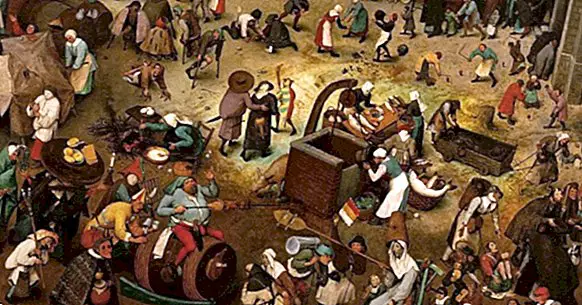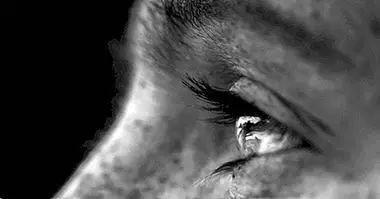Collective madness or massive psychogenic disease: this is its operation
The term "collective madness" has been used to talk about very diverse phenomena, from the epidemics of dance that took place in Europe in the Middle Ages to the rise of Hitler and Nazism, or even the communist revolutions and the independence movement Catalan.
In this article we will try analyze the concept of collective madness or massive psychogenic illness leaving aside the political and ideological uses that have been given to the term. However, as we will see below, it is difficult to define the degree of solidity and the explanatory potential of this concept due to factors of a different nature.
- Related article: "The 10 rarest mental syndromes that are known"
What is collective madness?
The concepts "collective madness" and "massive psychogenic disease" they are used to refer to unusual phenomena consisting of the propagation of disorders of psychological origin in multiple members of human communities. More generally, there has also been talk of depressions or anxiety disorders of collective scope.
However, this term is normally used to refer to alterations characterized by a delirious tone ; At times the instrumental use of the concept of collective madness is also evident in order to discredit certain sets of personal ideas and values, such as religions and political ideologies.
The difference between this concept and that of collective hysteria is ambiguous, judging from the available literature. This last term is used in a particular way to talk about collective delusions regarding threats, whether real or not; however, the phenomena of collective madness that we will describe have been described as collective hysteria by some authors.
At present the degree of agreement of the scientific community around these concepts is very low. To the difficulties inherent to the analysis of collective phenomena the fuzziness in the definition of collective madness comes together and the contamination of the concept due to its indiscriminate use by experts and laymen.
- You may be interested: "Amok syndrome: causes, symptoms and treatment"
Examples of this phenomenon
Throughout history several events have been recorded that have been related to the idea of collective madness. The usual symptoms of these alterations are typically psychosomatic , such as headaches, feelings of dizziness, weakness and fatigue, coughing, nausea, discomfort in the abdomen and throat or breathing difficulties.
In a very general way, and taking into account the limitations that we have mentioned, we can affirm that the phenomena that are included in the category of collective madness they have in common the lack of an organic basis for alterations , the transience of the signs and symptoms, the presence of intense anxiety and the appearance in isolated human groups.
1. The epidemics of dance
During the High Middle Ages, between the fourteenth and seventeenth centuries, a series of very striking episodes of collective madness took place in Europe. These phenomena are spoken of as "dance epidemics" because affected people danced in a group in an uncontrolled way until losing consciousness because of fatigue.
In general, dance epidemics occurred during periods of economic crisis, and in some cases they lasted several months. Apparently these facts were especially common in groups of nuns, and dance movements often involved obscene gestures.
2. Episodes in factories
After the Industrial Revolution, presumptive outbreaks of collective madness in factories . We find references to these phenomena in many different places, including the United Kingdom, the United States, Russia, Germany, France and Italy. The specificity of the context is striking, although the episodes vary widely among them.
Thus, for example, in the 1970s collective phenomena characterized by aggressiveness and experiences of possession of spirits occurred in several factories in Singapore; The June Bug episode, which took place in the United States, was clearly associated with psychosocial stress and included physical signs of anxiety.
3. The Tanganyika Laughter Epidemic
In 1962 a phenomenon of collective madness took place in the region of Lake Tanganyika in Central Africa. In one school, three girls started to laugh uncontrollably ; the episode affected 95 of the 159 students at the center. Then very similar events occurred in other schools; some adults also showed the signs.
Four.Grisi siknis
The grsis siknis is a syndrome linked to the specific culture of the Miskito society, which resides mainly in Honduras and Nicaragua. These are outbreaks that mainly affect adolescent women; they refer experiences of possession by spirits or demons and manifest violent behaviors and symptoms such as fear, anger and dizziness.
This type of collective madness has gained some fame in recent years because of the outbreaks that have occurred after Hurricane Felix, especially in Nicaragua. These episodes had a relatively long duration and affected a large number of young women, passing from one to another by suggestion.
- Related article: "Grisi siknis: symptoms and causes of this cultural syndrome"



















